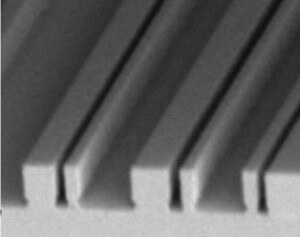Many of us dream of mobile phones that we can fold up or tuck into our wallets. Indeed, researchers have made breakthroughs in creating flexible electrical circuits, flexible batteries and flexible screens. But the camera lens in the mobile devices is a few millimeters thick and therefore stands as an obstacle on the way to flexible mobile phones

Optical lenses got their name thanks to their imagination for their rounded shape, a mascot of edible lenses. But it is possible that in the future cameras will focus light using flat lenses. Physicists are making significant progress in developing planar lenses that can scatter and bend light rays without any swelling.
Many of us dream of mobile phones that we can fold up or tuck into our wallets. Indeed, researchers have made breakthroughs in creating flexible electrical circuits, flexible batteries and flexible screens. But the camera lens in the mobile devices is a few millimeters thick and therefore stands as an obstacle on the way to flexible mobile phones. This is especially true in cases where it is necessary to use thick corrective lenses to overcome defects that cause blurry images.
In 2012, a leap forward in the field occurred when the physicist and engineer Federico Capasso and his partners at Harvard University presented a preliminary model of an extremely thin flat lens. Although not curved, this glass chip can focus light using microscopic ridges that are densely and precisely arranged on it to bend light waves in predetermined directions (see photo). The problem with this lens was that it only worked at a single wavelength of a single color and even that was not accurate.
The more updated version of the flat lens, published in February 2015 in the online edition of the journal Science, is already much more than a proof of feasibility: it perfectly focuses red, green and blue light, the combination of which, as we know, can create images of any color. Since then, the team of researchers has already created a larger prototype that, according to Capasso, "works exactly as we expected."
Such lenses could reduce the size of photographic equipment, microscopes and telescopes and even reduce their price. It may even be possible in the future to print these lenses on flexible plastic for use in thin, foldable devices. The researchers are in contact with Google and other technology companies. Bernard Kress, the chief optical architect at Google X [the enterprise for advanced technologies of the company - the editors], says that such flat lenses could be used for new, small and light types of screens and imaging systems.
The obvious question now is, if the lenses no longer have the shape of lenses, maybe they should be renamed?
The article was published with the permission of Scientific American Israel
ה
